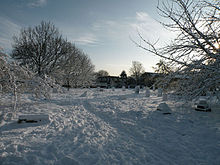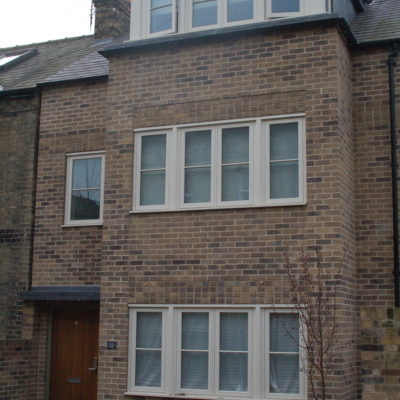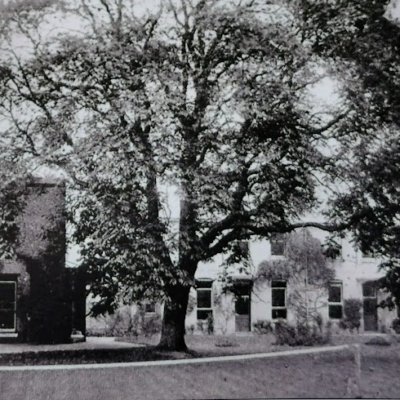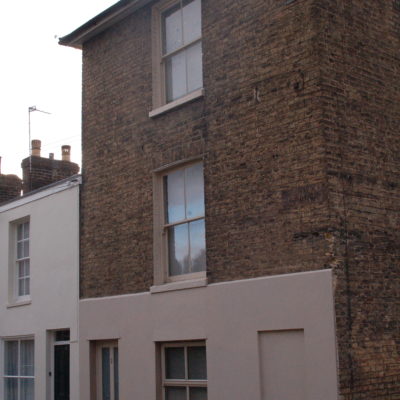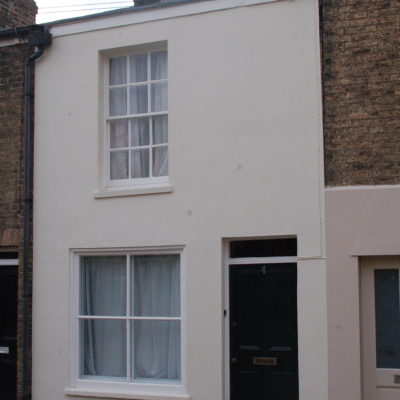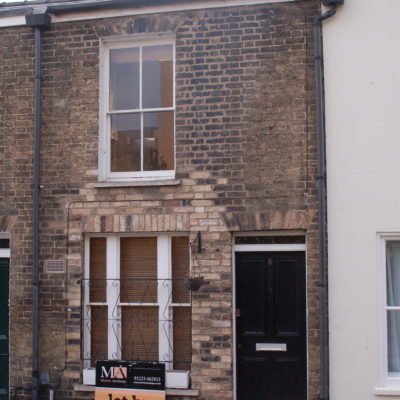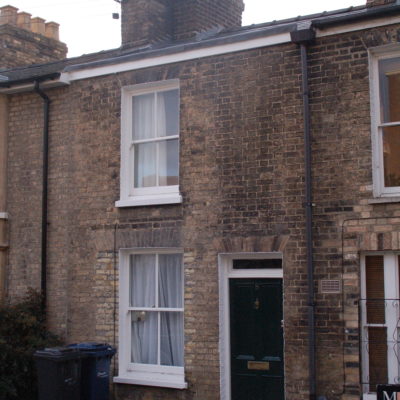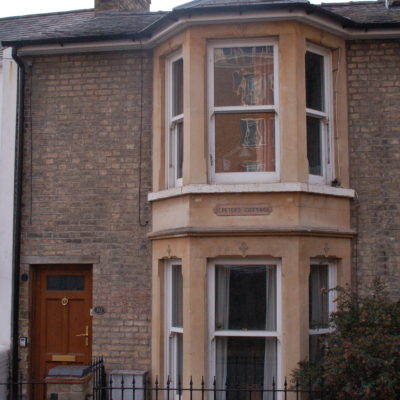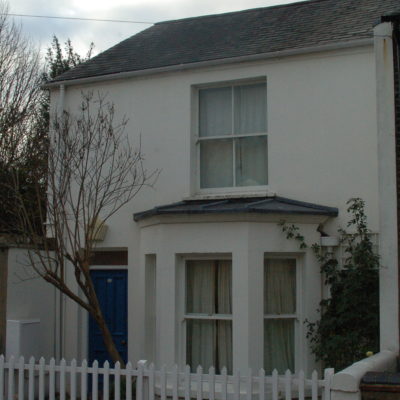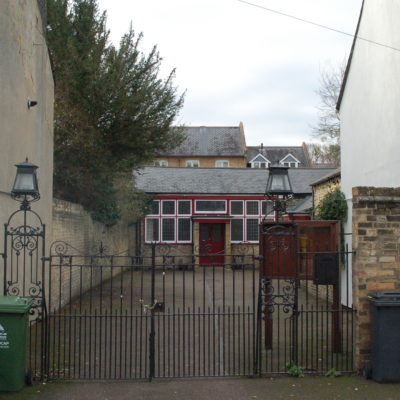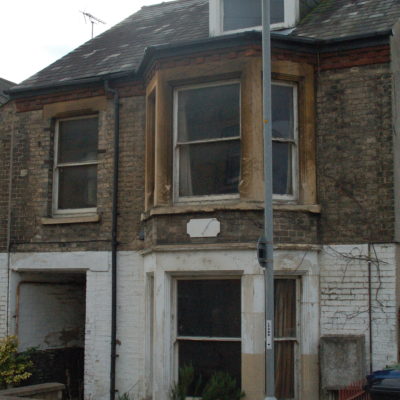Search by topic
- archaeology
- architecture
- bricklayer
- Building of Local Interest
- carpenter
- church
- crime
- dressmaker
- fire
- Great Eastern Railway
- listed building
- medieval
- oral history
- Public House
- Rattee & Kett
- Religious House
- Roman
- scholar
- school
- Then and Now
- tudor
- women
- work
- world war one
- world war two
Search by text
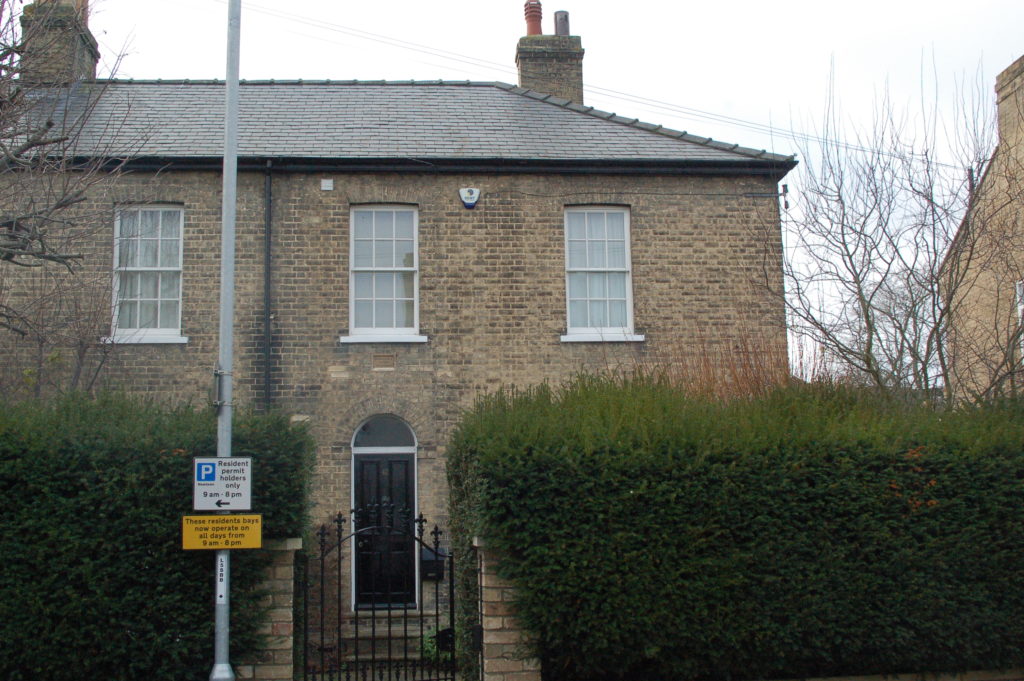 42 Panton Street
42 Panton Street42 (31) Panton Street, Providence House
History of 42 Panton Street
1891 (31)
George Cates, widower, 65, cow keeper, b Cambs
Mary Ann, 23, b Dullingham
Rosa Agnes Welch, 28, servant, b Norfolk
Matilda Heath, 28, servant, b Dullingham
Frank Kester, 15, milk boy, b Swavesey
1901 (31)
George Hearne, 48, cab driver, b Hants
Martha Ann, 47, b Upwell
Edith Ellen, 20, b Cambridge
Albert Henry, 15, b Cambridge
May, 14, b Cambridge
Arthur, 12, b Cambridge
Alice Mary, 11, b Cambridge
Caroline, 7, b Cambridge
Stanley John, 6, b Cambridge
Percy Frederick, 4, b Cambridge
Mary Anne Roome [?], 27, boarder, living on own means, b London
Albert Henry Hearne : Second Lieutenant, Albert Henry Hearn, 1/2nd Battalion, attached 8th Battalion, Leicestershire Regiment. Killed in action 1st October 1917. Commemorated on Tyne Cot Memorial, Zonnebeke, Panels 50/51. See also Cambridge Guildhall (St Paul’s Roll of Honour).
In 1911 Albert Henry Hearne is a lance corporal in the 21st (Empress of India’s) Lancers stationed in Egypt. The 21st Lancers never saw action in Europe during WWI but it seems that Albert was selected for officer training and reassigned.)
In 1911 the Hearne family were living at 26 Panton Street.
1911 (31)
Ellen Maria Williams, 53, college bedmaker, b Norwich
Edith Wallace [?], 13, b Beds.
1913 (42)
Harry Edmund Stone
Claude Victor Emmerson: Private 40674, 10th Battalion, Lancashire Fusiliers. Killed in action 16th October 1917. Aged 30. Born Cambridge, enlisted East Ham, Essex, resident Hunstanton, Norfolk. Son of Mr. and Mrs. H. F. Emmerson, of 42, Panton St., Cambridge; husband of Agnes Emmerson, of 2, Charlbury Terrace, Hunstanton. Buried in CEMENT HOUSE CEMETERY, Langemark-Poelkapelle, West-Vlaanderen, Belgium. Plot I. Row K. Grave 3. See also Liverpool Street Station, London (St Paul’s Roll of Honour)
1962
Philip Hall
Catherine Hall reminisced in 2001 about this house which she moved into in 1960. It is double fronted with the house door in the middle and the date MDCCCLI (1851) over it. She described the interior in detail:
When you went in, the front room on the right was an office and the back right-hand room had two steps down to a brick floor. The room is still extremely cold. It had decayed shelves, traces of a heavy outside blind, and iron rings in the kitchen from which hooks could hang. Across the passage was the parlour, and behind it the kitchen. The neighbour at 44 said that the cold room had been a tiny dairy.
Behind the houses was a communal cobbled yard with a well and cowsheds for half a dozen milking cows. the shed would have had haylofts above them. They backed onto St Eligius Street and in1901 were sold as cottages (nos. 1,3,5,7,9 & 11). The communal well was at the end of the garden of number 5 and at one time had the drains of the surrounding properties draining into it. It is now concreted in.
On the other side of St Eligius Street, opposite the sheds, there was a straight, narrow passageway, a space now used by the Convent as a car park, that led to Brook Street and a little iron bridge, also dated 1851, which crosses Hobson’s Conduit. The path and the bridge would have been used by the cows going between the Providence House Dairy and Coe Fen. This little cow bridge has a bend in it.
(J Finch ‘Bull’s Milk Is Best’)
Contribute
Do you have any information about the people or places in this article? If so, then please let us know using the Contact page or by emailing capturingcambridge@
License
This work is licensed under CC BY-NC-SA 4.0










